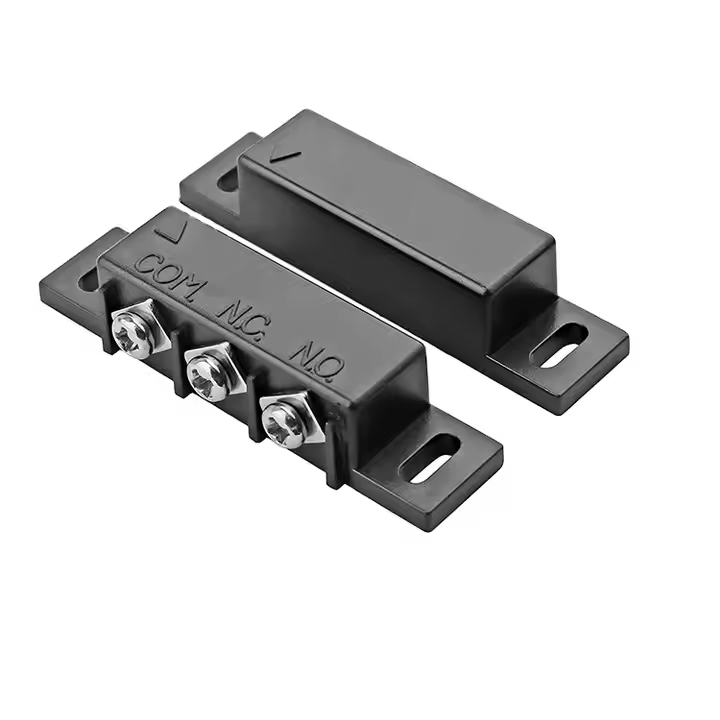Introduction
Magnetic switches are crucial in various industries, from security systems to industrial automation. These devices operate based on the interaction between magnetic fields and mechanical components, offering reliable and non-contact switching solutions. In this comprehensive guide, we will explore the principles behind magnetic switches, their diverse applications, and key considerations when selecting the right switch for your project.
Understanding Magnetic Switches
A magnetic switch is an electrical switch that activates or deactivates through the influence of a magnetic field. Unlike traditional mechanical switches that require physical contact to change state, magnetic switches can respond to external magnets without direct touch. This characteristic makes them highly durable and suitable for environments where dust, moisture, or other contaminants could interfere with conventional switches.
Working Principle
The operation of a magnetic switch typically involves two main parts:
- Reed Switch: A reed switch consists of two ferromagnetic reeds sealed within a glass envelope. When a magnetic field is brought near the reed switch, it causes the reeds to attract each other, closing the circuit.
- Magnet: An external magnet placed close enough to the reed switch generates the necessary magnetic field to trigger the switch’s action.
When the magnet moves away, the reeds return to their original position, breaking the circuit. This simple yet effective mechanism ensures long-lasting performance and minimal wear.
Types of Magnetic Switches
There are several types of magnetic switches available, each designed for specific applications:
- Single-Pole Single-Throw (SPST): Has one input and one output; it either completes or breaks a single circuit path.
- Single-Pole Double-Throw (SPDT): Provides two possible outputs; when activated, it connects one common terminal to either of two separate terminals.
- Latching Magnetic Switches: Maintain their state after activation until another magnetic pulse resets them.
- Hall Effect Sensors: Use semiconductor technology to detect changes in magnetic fields, offering solid-state reliability without moving parts.
Applications
Magnetic switches find extensive use across numerous sectors due to their versatility and reliability:
- Security Systems: Door and window sensors in alarm systems often employ magnetic switches to detect unauthorized openings.
- Automotive Industry: Used in car door locks, seat belt detection, and engine management systems.
- Industrial Automation: Ideal for proximity sensing, counting, and positioning tasks in manufacturing processes.
- Consumer Electronics: Found in laptops and tablets to detect lid closure and conserve battery life.
- Home Appliances: Employed in washing machines, refrigerators, and other devices for level sensing and safety interlocks.
Selecting the Right Magnetic Switch
Choosing the appropriate magnetic switch depends on several factors:
- Operating Environment: Consider temperature range, humidity levels, and exposure to chemicals or vibrations.
- Switch Type: Determine whether SPST, SPDT, latching, or Hall effect best suits your application requirements.
- Sensitivity: Select a switch with the correct operating distance to ensure reliable activation by the intended magnet.
- Certifications and Standards: Verify compliance with relevant industry standards such as CE, UL, or RoHS.
- Installation Method: Choose between surface mount, panel mount, or cable assembly depending on the installation space and ease of integration.
Conclusion
Magnetic switches offer a robust, maintenance-free solution for a wide array of applications. Their ability to operate without physical contact provides significant advantages in challenging environments. By understanding the working principles, exploring different types, and considering critical selection criteria, you can confidently choose the perfect magnetic switch for your needs. Whether enhancing security systems, optimizing industrial operations, or improving consumer electronics, magnetic switches continue to prove their value in modern technology.

